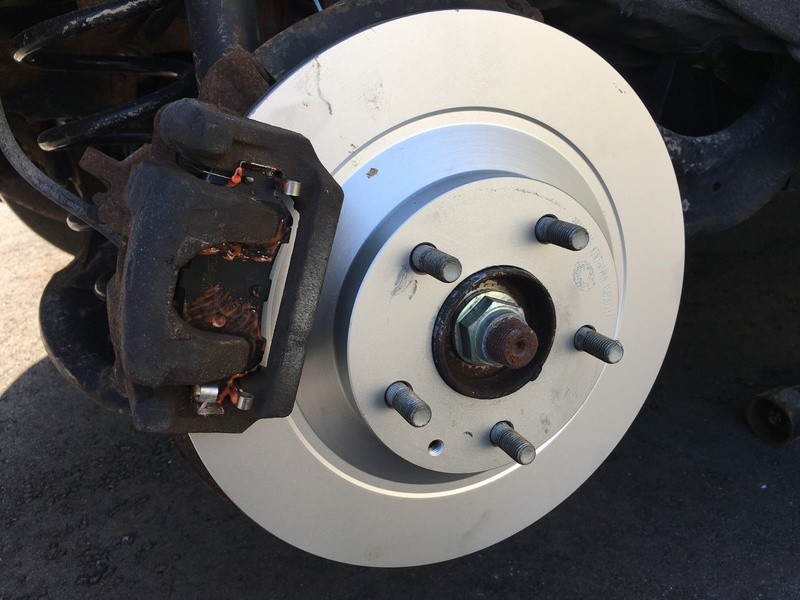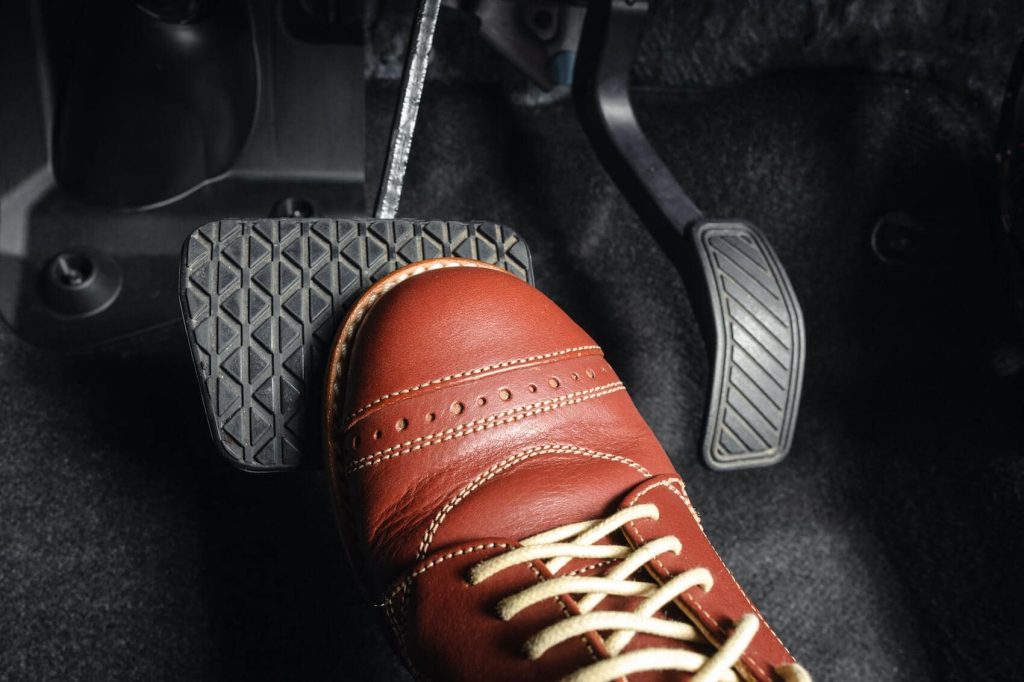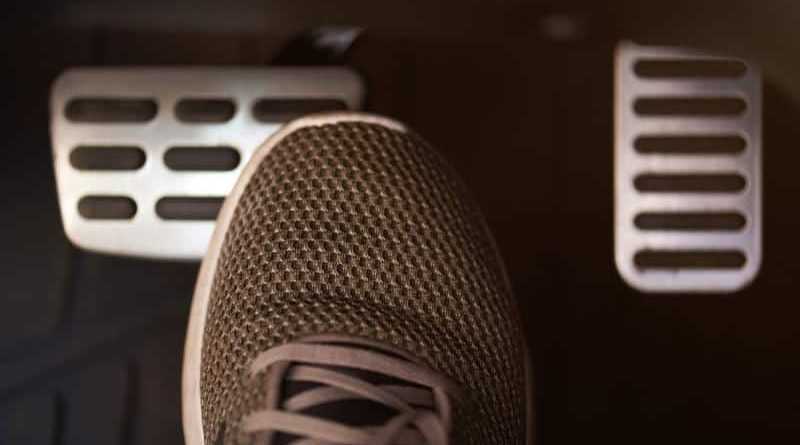Don’t Let Brake Pedal Squeaking Drive You Crazy: Tips for a Quieter Ride
Brake pedal squeaking is one of the most annoying sounds a driver can experience. It can be a constant source of frustration and can greatly affect the overall driving experience. Whether you’re driving in traffic or cruising down the highway, the sound of a squeaking brake pedal can be distracting and even embarrassing. In addition to being annoying, brake pedal squeaking can also indicate underlying issues with your braking system that need to be addressed. In this article, we will explore the causes and effects of brake pedal squeaking, how to diagnose it, the importance of addressing it, and various solutions for fixing and preventing it.
The Annoying Sound of Brake Pedal Squeaking: Causes and Effects
There are several common causes of brake pedal squeaking. One of the most common causes is worn brake pads. Over time, brake pads can become thin and worn down, causing them to make contact with the rotor and create a squeaking sound. Another common cause is dirty brake components. When dirt, dust, and debris accumulate on the brake pads or rotors, it can cause friction and result in a squeaking noise. Additionally, rusted rotors can also contribute to brake pedal squeaking. When rotors become rusted, they can create uneven surfaces that cause the brake pads to vibrate and produce a squeaking sound.
The effects of brake pedal squeaking can be quite significant. One of the most obvious effects is reduced braking performance. When your brakes are squeaking, it’s a sign that something is not functioning properly within your braking system. This can result in longer stopping distances and decreased control over your vehicle. In addition to reduced braking performance, brake pedal squeaking can also be a safety hazard. The noise can be distracting for the driver and other road users, potentially leading to accidents or near misses.
How to Diagnose Brake Pedal Squeaking: Common Signs and Symptoms

Diagnosing brake pedal squeaking can be relatively straightforward if you know what signs and symptoms to look out for. One of the most common signs is a high-pitched squeaking or squealing noise when you apply the brakes. This noise is usually more noticeable at lower speeds and can become louder as the brake pads wear down further. Another common symptom is vibrations felt through the brake pedal or steering wheel when braking. These vibrations can indicate that the brake pads are not making even contact with the rotors, resulting in a squeaking sound.
Difficulty braking is another symptom of brake pedal squeaking. If you find that it takes more effort to bring your vehicle to a stop or if the brakes feel spongy, it could be a sign that there is an issue with your braking system. Additionally, if you notice that your vehicle pulls to one side when braking, it could indicate uneven wear on the brake pads or a sticking caliper, both of which can cause brake pedal squeaking.
The Importance of Addressing Brake Pedal Squeaking: Safety and Maintenance
Addressing brake pedal squeaking is not just about eliminating an annoying noise; it is also crucial for safety reasons. As mentioned earlier, brake pedal squeaking can indicate underlying issues with your braking system that can affect its performance. By addressing the squeaking, you can ensure that your brakes are functioning properly and that you have full control over your vehicle’s stopping power. This is especially important in emergency situations where quick and efficient braking is essential.
In addition to safety reasons, addressing brake pedal squeaking is also important for maintenance purposes. Ignoring the issue can lead to further damage to your braking system, resulting in more expensive repairs down the line. By addressing the squeaking early on, you can prevent more significant issues from arising and prolong the lifespan of your brake components.
DIY vs. Professional Brake Pedal Squeaking Repair: Pros and Cons
When it comes to repairing brake pedal squeaking, you have the option of doing it yourself or seeking professional help. Both options have their pros and cons, and the best choice depends on your level of experience and comfort with working on your vehicle.
One of the main advantages of DIY repair is cost savings. By doing the repairs yourself, you can avoid labor costs and potentially save a significant amount of money. Additionally, DIY repair allows you to have full control over the process and ensures that you are using the parts and materials that you prefer.
However, there are also some drawbacks to DIY repair. One of the main challenges is the lack of expertise and experience. If you are not familiar with working on brakes, it can be easy to make mistakes or overlook important details. This can result in improper repairs or even further damage to your braking system. Additionally, some repairs may require specialized tools or equipment that you may not have access to.
On the other hand, seeking professional help for brake pedal squeaking repair offers several advantages. Professional mechanics have the knowledge, experience, and tools necessary to diagnose and fix the issue correctly. They can ensure that all repairs are done properly and that your braking system is in optimal condition. Additionally, professional repairs often come with warranties or guarantees, providing you with peace of mind.
However, professional repairs can be more expensive than DIY repairs. Labor costs can add up quickly, especially if multiple components need to be replaced. Additionally, scheduling an appointment and waiting for the repairs to be completed can be inconvenient for some people.
Ultimately, the decision between DIY and professional repair depends on your personal preferences, skills, and budget. If you are confident in your abilities and have the necessary tools, DIY repair can be a cost-effective option. However, if you are unsure or uncomfortable with working on your brakes, it is best to seek professional help to ensure the job is done correctly.
Quick Fixes for Brake Pedal Squeaking: Simple Solutions for a Quieter Ride

If you are experiencing brake pedal squeaking and want a quick fix to temporarily alleviate the noise, there are a few simple solutions you can try. One of the easiest fixes is to clean your brake components. Over time, dirt, dust, and debris can accumulate on the brake pads and rotors, causing friction and resulting in a squeaking sound. By cleaning these components, you can remove the buildup and potentially reduce or eliminate the noise. Use a brake cleaner or a mild detergent and water solution to clean the brake pads and rotors thoroughly.
Another quick fix for brake pedal squeaking is to apply lubricant to the brake components. Lubricating the contact points between the brake pads and calipers can help reduce friction and eliminate the squeaking noise. However, it is important to note that not all lubricants are suitable for use on brakes. Make sure to use a high-temperature brake lubricant that is specifically designed for this purpose. Apply a thin layer of lubricant to the contact points, being careful not to get any on the braking surface of the pads or rotors.
Additionally, if you suspect that rusted rotors are causing the squeaking, you can try lightly sanding them to remove the rust. Use fine-grit sandpaper and gently sand the surface of the rotors until they are smooth. This can help eliminate any uneven surfaces that may be causing the brake pads to vibrate and produce a squeaking sound.
While these quick fixes can provide temporary relief from brake pedal squeaking, it is important to remember that they are not permanent solutions. If you are experiencing persistent or worsening brake pedal squeaking, it is best to have your braking system inspected by a professional mechanic.
Preventing Brake Pedal Squeaking: Tips for Proper Brake Maintenance
Preventing brake pedal squeaking starts with proper brake maintenance. By taking care of your brakes and addressing any issues early on, you can reduce the likelihood of experiencing squeaking in the future. Here are some tips for maintaining your brakes:
- Regular inspections: Regularly inspect your brake components for signs of wear or damage. Look for thin brake pads, uneven wear patterns, or any leaks or corrosion.
- Replace brake components as needed: If you notice that your brake pads are worn down or that other components are damaged, replace them promptly. Waiting too long to replace worn or damaged parts can lead to further damage and potentially more expensive repairs.
- Avoid aggressive braking: Try to avoid sudden or aggressive braking whenever possible. This can put unnecessary stress on your braking system and increase the likelihood of squeaking.
- Avoid excessive heat: Excessive heat can cause your brakes to wear down faster and can also contribute to brake pedal squeaking. Avoid riding your brakes or braking excessively on long downhill descents.
- Keep your wheels clean: Regularly clean your wheels to remove dirt, dust, and debris that can accumulate on the brake components. This can help prevent friction and reduce the likelihood of squeaking.
By following these tips, you can keep your brakes in good condition and reduce the chances of experiencing brake pedal squeaking.
Upgrading Your Brakes: How to Choose the Right Brake Pads for a Quieter Ride
If you are tired of dealing with brake pedal squeaking and want a more permanent solution, upgrading your brake pads can be a good option. Upgraded brake pads are often designed to reduce noise and provide better performance compared to standard brake pads. When choosing the right brake pads for a quieter ride, there are a few factors to consider:
- Material: Brake pads are typically made from various materials, including organic, semi-metallic, and ceramic. Each material has its own advantages and disadvantages. Organic brake pads are generally quieter but may not provide the same level of performance as semi-metallic or ceramic pads. Ceramic pads are known for their quiet operation and excellent performance, but they can be more expensive.
- Driving style: Consider your driving style when choosing brake pads. If you do a lot of aggressive driving or towing, you may want to opt for a more durable and high-performance brake pad.
- Compatibility: Make sure that the brake pads you choose are compatible with your vehicle’s braking system. Check the manufacturer’s specifications and consult with a professional if you are unsure.
- Reviews and recommendations: Read reviews and seek recommendations from trusted sources to get an idea of the performance and noise levels of different brake pads. This can help you make an informed decision.
By upgrading your brake pads, you can reduce the likelihood of experiencing brake pedal squeaking and enjoy a quieter ride overall.
Brake Pedal Squeaking in Cold Weather: How to Avoid and Fix It
Brake pedal squeaking can be more common in cold weather due to various factors. Cold temperatures can cause the metal components of your braking system to contract, resulting in increased friction and potential squeaking. Additionally, moisture can accumulate on the brake components, leading to rust or ice formation that can contribute to squeaking.
To avoid brake pedal squeaking in cold weather, there are a few steps you can take:
- Warm up your vehicle: Allow your vehicle to warm up before driving in cold weather. This can help warm up the braking system and reduce the likelihood of squeaking.
- Avoid sudden braking: Try to avoid sudden or aggressive braking in cold weather, as this can put additional stress on your braking system and increase the chances of squeaking.
- Keep your vehicle clean: Regularly clean your vehicle, including the wheels and brake components, to remove any dirt, salt, or debris that can contribute to squeaking.
If you are already experiencing brake pedal squeaking in cold weather, there are a few things you can do to fix it:
- Clean your brakes: Use a brake cleaner or a mild detergent and water solution to clean your brake components. This can help remove any dirt, salt, or debris that may be causing the squeaking.
- Apply lubricant: Apply a high-temperature brake lubricant to the contact points between the brake pads and calipers. This can help reduce friction and eliminate the squeaking noise.
- Warm up your brakes: If possible, park your vehicle in a warm garage or use a space heater to warm up the braking system before driving. This can help reduce the likelihood of squeaking in cold weather.
By following these tips, you can avoid and fix brake pedal squeaking in cold weather and enjoy a quieter ride.
The Role of Brake Lubricants in Reducing Brake Pedal Squeaking
Brake lubricants play a crucial role in reducing brake pedal squeaking. They help reduce friction between the brake pads and calipers, allowing for smooth and quiet operation. Brake lubricants are typically high-temperature compounds that can withstand the heat generated during braking.
There are different types of brake lubricants available, including silicone-based and synthetic-based options. Silicone-based lubricants are popular because they are resistant to water and provide excellent lubrication properties. Synthetic-based lubricants, on the other hand, offer superior heat resistance and can withstand extreme temperatures.
When applying brake lubricant, it is important to follow the manufacturer’s instructions carefully. Apply a thin layer of lubricant to the contact points between the brake pads and calipers, being careful not to get any on the braking surface of the pads or rotors. Excessive lubricant can lead to reduced braking performance and potential safety hazards.
Regularly inspect your brake components and reapply lubricant as needed. This can help reduce the likelihood of brake pedal squeaking and ensure that your braking system operates smoothly and quietly.
The Bottom Line: Don’t Let Brake Pedal Squeaking Drive You Crazy, Take Action Today!

Brake pedal squeaking can be a frustrating and annoying issue to deal with. It can affect your driving experience, reduce braking performance, and even pose safety hazards. By understanding the causes and effects of brake pedal squeaking, diagnosing the issue, and taking appropriate action, you can address the problem and enjoy a quieter ride.
Whether you choose to attempt DIY repairs or seek professional help, it is important to address brake pedal squeaking promptly. Ignoring the issue can lead to further damage to your braking system and potentially more expensive repairs down the line. Regular brake maintenance, including inspections and component replacements as needed, can also help prevent brake pedal squeaking from occurring in the first place.
If you are tired of dealing with brake pedal squeaking, consider upgrading your brake pads for a quieter ride. Choose the right brake pads based on your driving style, vehicle compatibility, and material preferences.
Remember, brake pedal squeaking is not something you have to live with. Take action today to address the issue and improve your driving experience. Your safety and peace of mind are worth it!
